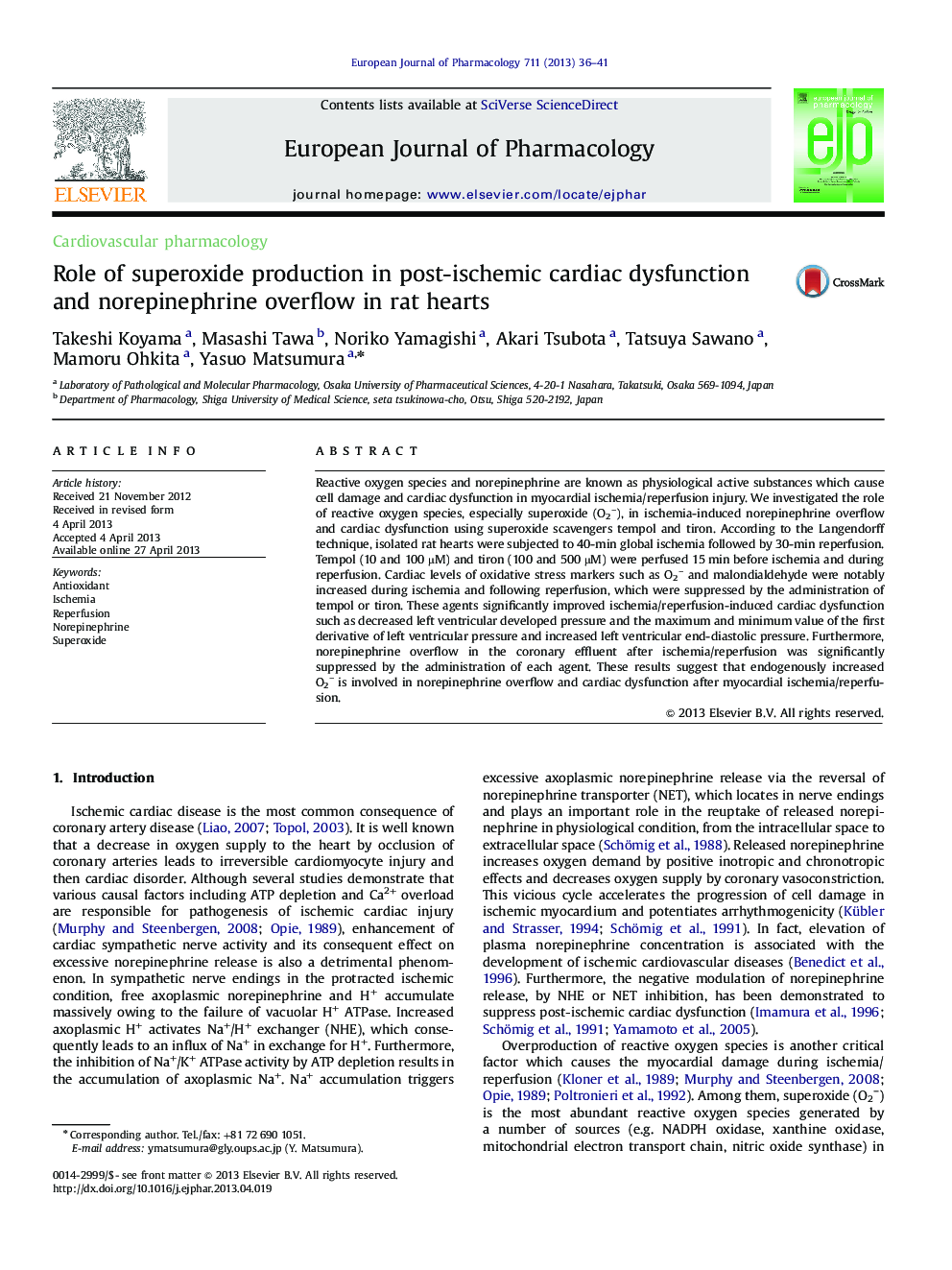| Article ID | Journal | Published Year | Pages | File Type |
|---|---|---|---|---|
| 2532145 | European Journal of Pharmacology | 2013 | 6 Pages |
Reactive oxygen species and norepinephrine are known as physiological active substances which cause cell damage and cardiac dysfunction in myocardial ischemia/reperfusion injury. We investigated the role of reactive oxygen species, especially superoxide (O2−), in ischemia-induced norepinephrine overflow and cardiac dysfunction using superoxide scavengers tempol and tiron. According to the Langendorff technique, isolated rat hearts were subjected to 40-min global ischemia followed by 30-min reperfusion. Tempol (10 and 100 µM) and tiron (100 and 500 µM) were perfused 15 min before ischemia and during reperfusion. Cardiac levels of oxidative stress markers such as O2− and malondialdehyde were notably increased during ischemia and following reperfusion, which were suppressed by the administration of tempol or tiron. These agents significantly improved ischemia/reperfusion-induced cardiac dysfunction such as decreased left ventricular developed pressure and the maximum and minimum value of the first derivative of left ventricular pressure and increased left ventricular end-diastolic pressure. Furthermore, norepinephrine overflow in the coronary effluent after ischemia/reperfusion was significantly suppressed by the administration of each agent. These results suggest that endogenously increased O2− is involved in norepinephrine overflow and cardiac dysfunction after myocardial ischemia/reperfusion.
